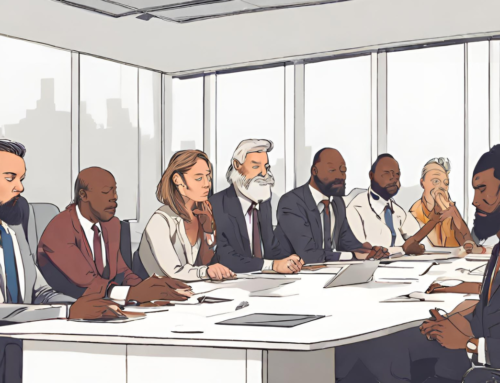The first possibility to check about others’ intentions is the most basic one — their degree of openness (or its opposite). It's the most basic, because if people are open to each other, communication can begin. If they are not, nothing good can happen.
With a little practice, you should be able to size people up very quickly along these lines on an almost automatic basis. Don't look for an instant read, however — what people call 'thin slicing' these days. In practice, it takes some time to establish a baseline of behavior with each new person you meet. The point is not to be able to perform this task instantly, but to be able to size someone up within a few minutes, with high reliability, in terms of whether this person is open to you.
Let’s begin with the face. First, notice the forehead. Is it wrinkled or smooth? For most of us, our habitual attitude is expressed in our foreheads, especially after about age 30. The more wrinkles and the deeper they are, the more habitually open a person is likely to be.
That's because a characteristic gesture of the open person is to raise the eyebrows, wrinkling the forehead, when looking for a response. Over the years, if you spend a good deal of time openly inviting response, you’ll get forehead wrinkles. There are fakers, but on the whole the forehead is a reliable sign of overall orientation. That does not mean that a person will be open or closed in any particular instance, but it does give you a sense of his or her general receptivity.
Beyond the forehead, notice the mobility of the eyebrows. How often and far do they move? People tend to raise their eyebrows when they’re interacting with others: looking for a response, asking a question, taking you in, and so on. So the amount and distance of motion are indicators of a general level of openness, and in the specific instance, when the eyebrows are up, openness to your input in the moment. Again, the movement may be in response to a question that the person has asked you, but it’s openness nonetheless.
Now go down to the eyes themselves. Are they narrowed or wide open? You need to establish a baseline of how the person behaves in fairly neutral situations. That will give you an idea of whether the particular case is one of openness. Generally people open their eyes wider when they are interested in something or someone and close them when they are not, or are actively suspicious or wary of events, people, or actions.
Because people are so active with their eyes, you need to be careful to rule out environmental reasons. Is a bright light shining in the person’s face? That may account for narrowed eyes. It may not be because you’ve just offered the person a used car at an unbeatable price. If you can, look at the pupils. How open or shut are they? Openness indicates interest, attraction, and arousal; the opposite indicates the reverse. Of course, the general level of lighting in the environment also affects the pupils, so you need to establish a norm.
I'll continue with the rest of the face and body in the next blog. I go into much more detail about this in my book, Trust Me: Four Steps to Authenticity and Charisma.








Leave A Comment